#DEC PDP-1
Explore tagged Tumblr posts
Text
Un día como hoy (6 de diciembre) en la computación y videojuegos

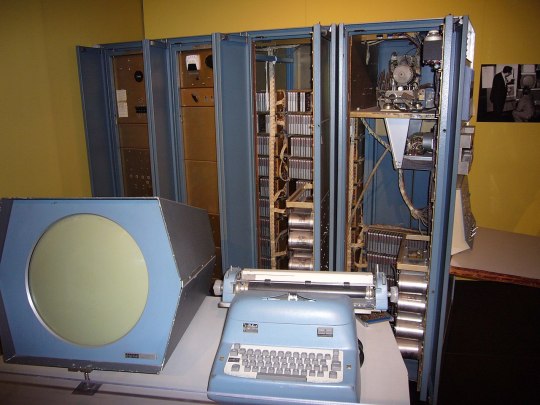
El 6 de diciembre de 1961, los ingenieros de Digital Equipment Corporation Steve "Slug" Russell, Martin "Shag" Graetz y Wayne Wiitanen del ficticio "Instituto Hingham" concibieron el juego Spacewars!, con la intención de implementarlo en un DEC PDP-1 en el Instituto de Tecnología de Massachusetts. Después de que Alan Kotok obtuviera algunas rutinas de seno y coseno de DEC, Russell comenzó a codificar, y en febrero de 1962 había producido su primera versión. Se necesitaron aproximadamente 200 horas de trabajo para crear la versión inicial. Las características adicionales fueron desarrolladas por Dan Edwards, Peter Samson y Graetz. #retrocomputingmx #decpdp1 #spacewars #retrogaming #gaming
0 notes
Text
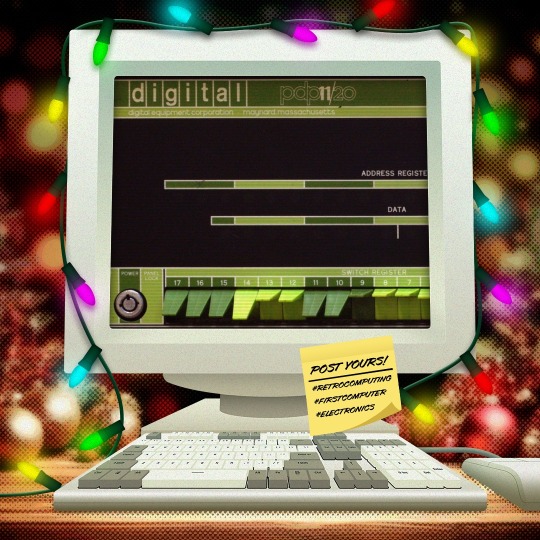
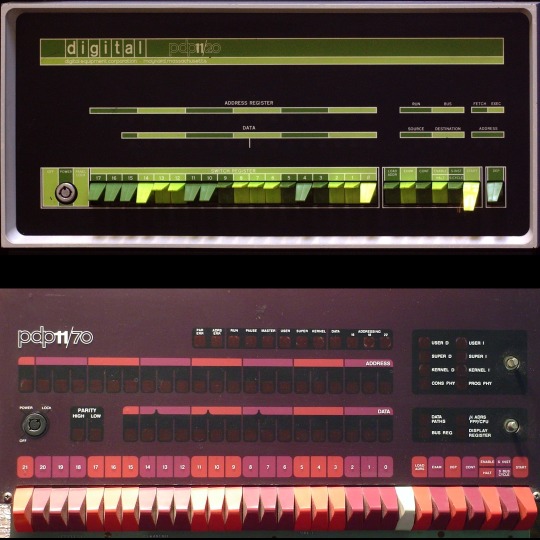
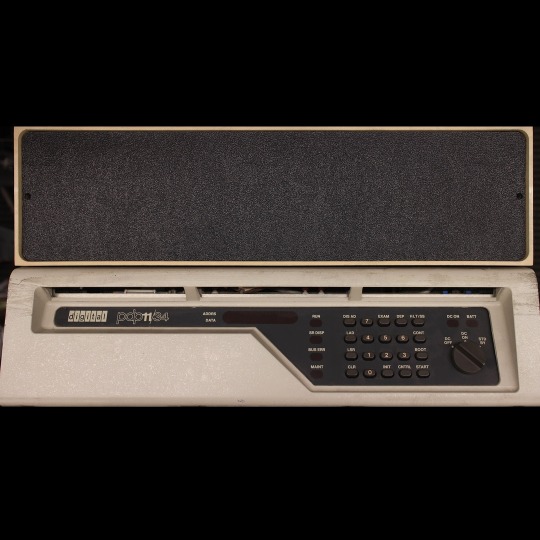
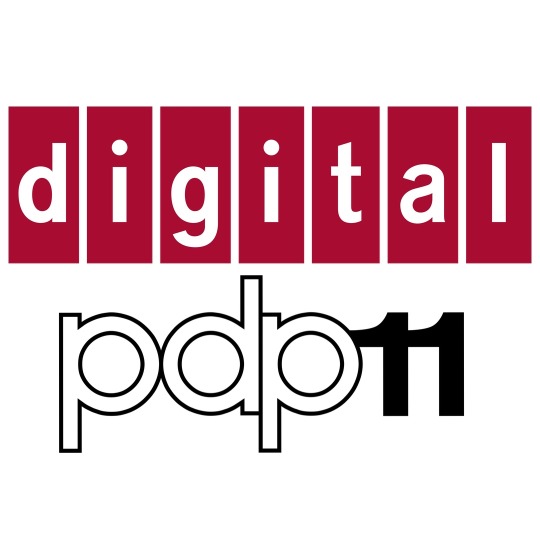
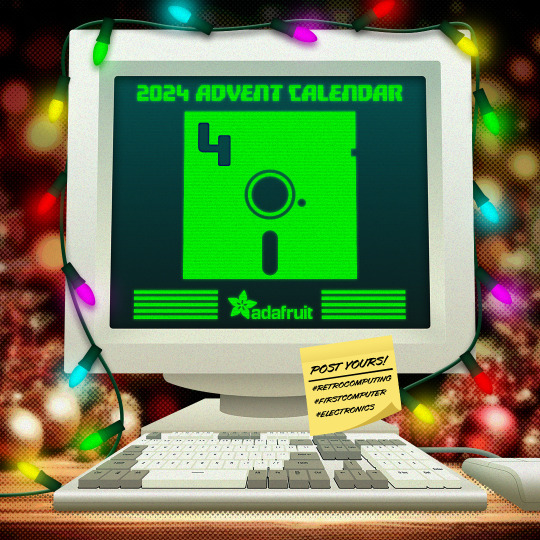
🎄💾🗓️ Day 4: Retrocomputing Advent Calendar - The DEC PDP-11! 🎄💾🗓️
Released by Digital Equipment Corporation in 1970, the PDP-11 was a 16-bit minicomputer known for its orthogonal instruction set, allowing flexible and efficient programming. It introduced a Unibus architecture, which streamlined data communication and helped revolutionize computer design, making hardware design more modular and scalable. The PDP-11 was important in developing operating systems, including the early versions of UNIX. The PDP-11 was the hardware foundation for developing the C programming language and early UNIX systems. It supported multiple operating systems like RT-11, RSX-11, and UNIX, which directly shaped modern OS design principles. With over 600,000 units sold, the PDP-11 is celebrated as one of its era's most versatile and influential "minicomputers".
Check out the wikipedia page for some great history, photos (pictured here), and more -
And here's a story from Adafruit team member, Bill!
The DEC PDP-11 was the one of the first computers I ever programmed. That program was 'written' with a soldering iron.
I was an art student at the time, but spending most of my time in the engineering labs. There was a PDP-11-34 in the automation lab connected to an X-ray spectroscopy machine. Starting up the machine required toggling in a bootstrap loader via the front panel. This was a tedious process. So we ordered a diode-array boot ROM which had enough space to program 32 sixteen bit instructions.
Each instruction in the boot sequence needed to be broken down into binary (very straightforward with the PDP-11 instruction set). For each binary '1', a diode needed to be soldered into the array. The space was left empty for each '0'. 32 sixteen bit instructions was more than sufficient to load a secondary bootstrap from the floppy disk to launch the RT-11 operating system. So now it was possible to boot the system with just the push of a button.
I worked with a number DEC PDP-11/LSI-11 systems over the years. I still keep an LSI-11-23 system around for sentimental reasons.
Have first computer memories? Post’em up in the comments, or post yours on socialz’ and tag them #firstcomputer #retrocomputing – See you back here tomorrow!
#dec#pdp11#retrocomputing#adventcalendar#minicomputer#unixhistory#cprogramming#computinghistory#vintagecomputers#modulardesign#scalablehardware#digitalcorporation#engineeringlabs#programmingroots#oldschooltech#diodearray#bootstraploader#firstcomputer#retrotech#nerdlife
291 notes
·
View notes
Text
You might have heard of 32-bit and 64-bit applications before, and if you work with older software, maybe 16-bit and even 8-bit computers. But what came before 8-bit? Was it preceded by 4-bit computing? Were there 2-bit computers? 1-bit? Half-bit?
Well outside that one AVGN meme, half-bit isn't really a thing, but the answer is a bit weirder in other ways! The current most prominent CPU designs come from Intel and AMD, and Intel did produce 4-bit, 8-bit, 16-bit, 32-bit and 64-bit microprocessors (although 4-bit computers weren't really a thing). But what came before 4-bit microprocessors?
Mainframes and minicomputers did. These were large computers intended for organizations instead of personal use. Before microprocessors, they used transistorized integrated circuits (or in the early days even vacuum tubes) and required a much larger space to store the CPU.
And what bit length did these older computers have?
A large variety of bit lengths.
There were 16-bit, 32-bit and 64-bit mainframes/minicomputers, but you also had 36-bit computers (PDP-10), 12-bit (PDP-8), 18-bit (PDP-7), 24-bit (ICT 1900), 48-bit (Burroughs) and 60-bit (CDC 6000) computers among others. There were also computers that didn't use binary encoding to store numbers, such as decimal computers or the very rare ternary computers (Setun).
And you didn't always evolve by extending the bit length, you could upgrade from an 18-bit computer to a more powerful 16-bit computer, which is what the developers of early UNIX did when they switched over from the PDP-7 to the PDP-11, or offer 32-bit over 36-bit, which happened when IBM phased out the IBM 7090 in favor of the the System/360 or DEC phased out the PDP-10 in favor of the VAX.
154 notes
·
View notes
Text
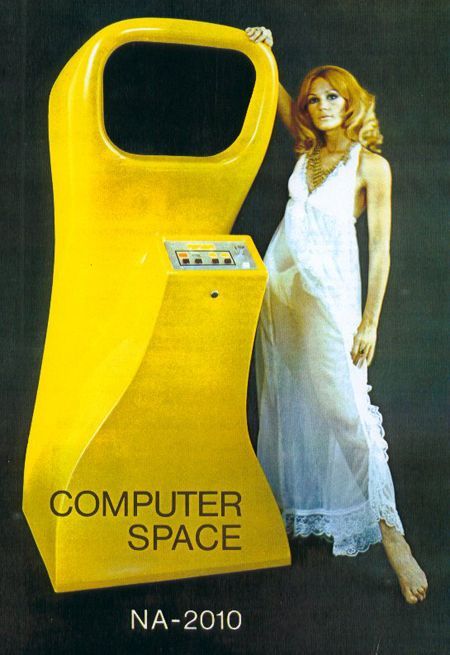
COMPUTER SPACE (1971)
"In 1971, a Californian entrepreneur named Nolan Bushnell decided to deliver Spacewar! to the masses. Computer Space—essentially Spacewar repackaged—was the first modern coin-operated arcade game."
SPACE WAR! (1962)
Spacewar! is a space combat video game developed in 1962 by Steve Russell in collaboration with Martin Graetz, Wayne Wiitanen, Bob Saunders, Steve Piner, and others. It was written for the newly installed DEC PDP-1 minicomputer at the Massachusetts Institute of Technology.

"the popularization of video games is better traced to Steve Russell, a graduate student who studied at MIT in the early 1960s. Russell is commonly credited for creating Spacewar with the help of collabora- tors. In Spacewar, each competitor controlled a spaceship. The players navigated the ships on a flat plane around a central sun (with simulated gravity) and attempted to destroy each other with missiles. In an interview with a reporter from Rolling Stone magazine, Russell described Spacewar not as a game, but as a way to “simulate a reasonably complicated physical system and actually see what is going on.”
Came across this whilst researching my book. Thought it was cool.
Quotes from Virtual Justice: The New Laws of Online Worlds by Greg Lastowka (2011) Read more about Computer Space at the Online Museum of play
#spacewar#space war#computer space#retro gaming#arcade games#retrocomputing#pdp-1#video games#history#the web was a sidequest#research#advertising#1970s#1970s history
5 notes
·
View notes
Text
2024年5月
1、鲜茉莉花60克,粳米50克。待煮至米将熟时放入茉莉花,熟则即食。茉莉花粥。 2、少吃,少吃,少吃! 3、爸爸包最大的特点是,大,要大。 4、有一首歌叫,【我们一起去大连吧】,作者写这首歌的心境跟我来大连的时候很像。对于火车站,我们知道总有下一站,不会说到了这一站就到终点没用下一站了,大连,俄语原来的意思就是遥远的地方,因为到了大连火车站,真没有下一站了。旅顺火车站更是最后一站。坐火车去任何地方都只能往北走。的确是一个非常遥远的地方,以至于每次回山东老家,火车汽车轮船飞机各种交通工具都用上了。 5、Meta 或 Facebook 以其围墙花园式的社交网络著称,但它同时还是科技巨头中最热衷于开源的。在微软、苹果、英伟达、Google、Meta 和亚马逊等巨头中,Meta 发布了大量对整个行业有重要影响力的开源项目:它的 AI 大模型 LLama 是很多大模型的基础;它的机器学习库 PyTorch 被认为有助于打破英伟达的 AI 软件护城河;此外还有如 React/React Native、GraphQL、Casandra、Open Compute Project、OpenBMC,等等。你可以在 Facebook 开源网站找到大量项目。很多项目都成为了行业标准的基础。OpenAI 的封闭模型还具有优势,但 LLama 等开源模型正在大幅削弱其优势,��们真正让 AI 变得更民主,而不是掌握在少数人手中。 6、周鸿祎最近在选购新能源汽车,建议问界m7。 7、不写,就无法思考 ——尼克拉斯·卢曼。大多数人的意识中,思考是一个在纯粹在大脑中进行的内部过程,纸笔的唯一作用就是将思考的结果记录下来。而实际上可能并不是这样,大脑是“一台能跳跃式得出结论的机器”,不擅长系统性地进行思考。 而写作的目的是将思考进行外显化,任何具有一定复杂度的想法都需要通过写作表达。正如费曼强调自己是在笔记本上进行思维过程,而不是在纸上记录思维过程一样,只有写下的时候才会知道自己到底想表达什么,逻辑中有何缺陷,继而才能对思考进行正确的修正。 8、曾经我很排斥去“记录”生活,我一度认为生活是用来体验的,而不是用相机、用纸笔去记录。但当我年纪大了,意识到自己的记忆是如此不可靠之后,才开始后悔记录的重要性。不论是相片还是简短的几句文字,都是能令我们回忆起美好往昔的线索,它们像似跨越时空而来,为我们带回过去的记忆。 9、信息茧房是美国学者凯斯·桑斯坦提出的对于网络信息时代对民主的破坏的理论假说。作为互联网时代的参与者,看似选择很多,但实际上只有通过筛选的信息才能通过茧传递到内部。现在的大数据算法不但会控制你的兴趣爱好,甚至已经拓展到评论区,我们只会刷到与我们相似的观点。 10、当立夏来临,夏天开始的时候,这里的春天刚刚开始。 11、五一开始,亚马逊对ip4地址开始收费,对我使用影响还是挺大的 12、随着年龄的增长,越来越不喜欢评论任何东西了。 13、最近忙到头大,忙到脑子完全不转了。 14、有时候要去做一件更有难度的事情的时候,如果没有做成,以现在的状态生活,突然觉得,就这样变老,就非常好。 15、更换了服务器,应该是更快了。 16、五一广场到香炉礁那一小段,每次都真是能堵车到天荒地老的感觉。 17、暂时不���用cdn了。 18、1970年代,巴西的里约热内卢,当时入室盗窃非常严重,所以有钱人就开始建围墙。过去城市是没有围墙的。一开始建矮围墙,小偷可以直接翻墙而过,然后又���高围墙,小偷就架个梯子,仍然可以翻墙而过,然后就把围墙建得更高,小偷用更高的梯子。 最后的结果是什么呢?就是当这个豪宅周围的围墙高到“里面不知道外面发生什么,外面也不知道里面发生什么”的时候,小偷进到屋子以后就可以做任何他想做的事情。不少富豪不仅仅家里被洗劫一空,有的人甚至连命都丢掉了。 19、我一般去一个写字楼的9楼去理发,那里理发不是理的好,主要是理的快,快的话七八分钟,慢的话十分钟就好了。 20、槐花包子也太好吃了。 21、晚上十点,下班。 22、由于从小就晕车的缘故,我对车一直没有任何兴趣。现在突然发现自己的朋友和四周,像我这种没有驾照的人,已经遇不到了。 23、走在路上,或公交车上开着窗,在这个季节能够闻到很多很多的花香。 24、在这么遥远的地方,还有几个老同学,也是非常难得。虽然离的很近,一年会大聚一次。今天是时隔一年半再次相聚。以前我们还是二十多岁,一起出去玩,现在转眼快四十岁了。我们都来自工程学院,却做着不同的工作。偶尔会有大学同学来大连出差,大家也会聚一聚,聊一聊,好像学校一样,无拘无束,胡说八道,没有边界。 25、有一首歌竟然叫《风吹蛋壳》 26、很小的时候,自己就很想成为一名园丁。 27、再次感叹,不想运动就是最好的开始运动的理由。 28、你无法让一个没有好奇心和低搜索能力的人,在当下用 AI 武装自己。 29、我上学的时候用的就是这款播放器。曾经的装机音乐播放器 Winamp 宣布将于 2024 年 9 月 24 日公开源代码。Winamp 由美国程序员 Justin Frankel 和俄罗斯程序员 Dmitry Boldyrev 联合开发。在 1990 年代末和 21 世纪初,几乎每一位用户的 PC 上都安装了 Winamp,它是装机必备软件之一。但在被 AOL 收购之后 Winamp 的发展陷入停滞。2014 年,Winamp ��� Shoutcast 音乐服务一起打包出售给了总部位于比利时布鲁塞尔的在线电台聚合服务 Radionomy。公开源代码将允许开源社区直接帮助改进该产品。 30、主要 Android 厂商正在追赶苹果公司,苹果为其 iPhone 智能手机提供大约 7 年的软件更新,而 Android 厂商的智能手机普遍只有 3 年甚至更短。 31、最近周末一直在整理一些文档,重新删除,重新更改,重新目标,期待感变弱,可能是这个年龄最大问题,我相信生命不是用时间来衡量的,而是用经历来衡量的。所以探索会是一个重要的关键词。 32、今天徒步大会,可惜上班到晚上十点。已经连续三四年没有参加了。遗憾。 33、办公楼不管几点下班,总是还有人没有下班。 34、皮尤研究中心的一项分析发现,2013 年的网页到 2023 年 10 月有 38% 已无法访问。研究结果凸显了在线内容寿命的短暂。研究人员利用了 Common Crawl 存档的网页,该服务定期存档互联网快照。从 2013 年到 2023 年研究人员每年收集了约 9 万个网页的样本,检查网页今天是否还能访问。结果发现,截至 2023 年 10 月,所有网页有四分之一无法访问,无法访问的情况分两种:16% 是网页不存在但域名还在,9% 是域名都没了。2013 年快照收集的网页中,有 38% 在 2023 年无法访问;2021 年收集的快照两年后有五分之一无法访问。 35、“为什么水对人那么重要,却那么便宜,而房子相对没那么重要,却那么贵?”也许是因为那么重要,反而不能贵了。 36、满大街,都是捧着花的女孩子,就算我再笨,是不是也要想一想今天是什么日子呢。 37、竹枝词,这首歌太好听了吧。 38、最近我在进行个人的所有信息都数字化保存和使用。由于现在随着视频高清的使用,大容量成了一个必须。我只有一块1T的硬盘,还是很多年前买的,还有几个比较大的U盘。现在我把所有大容量的据都放在网上了。1T的本地盘,只保存最重要的个人敏感数据。算了一下,一共也22.7T的容量了。在阿里有2.7T,在电信有10T,在Google有4T,在微软有6T。 39、就在前几年有马斯克曾经提出这个想法,让我感觉是不可能的。但是有了人工智能,这些想法反而变得不那么科幻了。 “Geoffrey Hinton 教授被誉为 AI 教父,他表示如果 AI 取代了更多人类的工作,为了消除其不公平的影响,政府应该推行全民基本收入(UBI 或 universal basic income)。他说,虽然 AI 能提高生产力和增加财富,但它带来的财富主要流向富人,而不是失去工作的人,这对社会会产生糟糕的影响。Hinton 教授是神经网络的先行者,而神经网络是 AI 的基础。他曾在 Google 工作,去年离职,表示可以更自由的谈论不受监管的 AI 所带来的危险。他建议禁止将 AI 用于军事,认为会对人类带来灭绝级威胁。” 40、计算机架构师 Gordon Bell 于 5 月 17 日在家中去世,享年 89 岁。他出生于 1934 年,在 MIT 获得电机工程学士和硕士学位,是 DEC 公司雇佣的第二名计算机工程师,开发了 PDP-1 系统的多个组件,发明了第一个通用异步收发报机(UART),是 PDP-4 和 PDP-6 的架构师,是 DEC 最成功的计算机 VAX 的负责人。他于 1983 年因心脏病从 DEC 退休,之后开始积极参与公共政策,帮助成立了 NSF 的计算机和信息科学与工程局,设立了 ACM Gordon Bell 奖,1995 年加入了微软研究院,研究“远程呈现”相关技术。 41、25 年前,一位用户报告了一个 Netscape Navigator 的 bug,问题是在“始终显示滚动条”下,textarea 的行高显示不正确,指定为 ROWS=5 COLS=30 的 TEXTAREA 字段显示的行高会增加大约 1。这个 bug 的历史比 Firefox 还要古老,Netscape Navigator 是 Firefox 的前身,过去 25 年相同的 bug 用户重复报告了数百次。几天前它终于被修复了。 42、我看过很多的感情悲剧,是因为缺乏对爱的理解,导致很多不幸。女人不可能因为你有钱而爱上你,因为她要的不是钱,而是全都要。很多男人自己不了解女人的这个特点,女人也不不了解自己的这个特点,以为可以只要钱。结果呢!经济学里面有一个飞轮理论,我感觉跟感情很像。 43、脱发是一件尴尬的事情,自己先习惯,然后别人再习惯,然后就都习惯了。 44、今天终于不穿秋衣了。尽管天气还是有点凉。 45、给孩子买了一盆含羞草,一会就去看看叶子张开了没有。睡��都问叶子张开了没有。 46、最近一篇中文互联网档案正在快速消失的文章被到处传播。随着我们使用的服务因为各种逐渐关闭,很多很多的内容就会从互联网上消失。最近也有朋友问我使用什么服务可以长期保存。我推荐Wordpress.com 这个网站,这个一个博客网站,我相信可以存在最少50年到100年。我的信息都是发布和备份到这里的。另外一种方式是,可以保存在互联网的档案馆里面。可惜的是,我提到的这些服务在国内都是被屏蔽无法访问的。wordpress从2003年开源发布到现在已经20多年了。现在世界上四到五成的网站都是由Wordpress开源程序所驱动的。包括Facebook的一些博客,美国白宫的网站等等。 47、男人买菜一般不太讲价钱,即使知道自己被坑,也会选择默不作声,只是以后啊,他再也不去那家买了,他对人如此。 48、绝大部分人这辈子就是成功不了,这不是自己的错,不可以加以指责。如何在失败的状态下,安然度过一生,这本身就非常重要。失败并不可耻,心态不健康才可耻。如何在失败的时候,依旧保持健康心态和饱满的能量,这尤为重要。 49、吃甜真的会让人开心。 50、唯一不同的是,很多「摄影人」热衷于摄影装备,镜头,但是很少见「炒菜人」大谈特谈自己用的锅的。
0 notes
Text
Bilgisayar Tasarımcısı Gordon Bell 89 Yaşında Öldü

Bilgisayar teknolojisinin öncülerinden Gordon Bell vefat etti. PDP ve VAX bilgisayar sistemlerinin geliştirilmesinde önemli katkıları oldu. Bell daha sonra Microsoft'a katıldı ve burada insanların kişisel bilgilerinin küresel dijital arşivlenmesine yönelik MyLifeBits projesinde çalışmaya başladı. Gordon Bell, Ağustos 1934'te doğdu ve 1960'ların başından bu yana birçok devrim niteliğindeki bilgisayar sisteminin geliştirilmesinde aktif olarak yer aldı. Ken Olsen ve Harlan Anderson tarafından kurulan Amerikan bilgisayar şirketi Digital Equipment Corporation (DEC) tarafından işe alındı. Bell, 1966 yılına kadar PDP-1 bilgisayarının giriş/çıkış alt sistemi üzerinde çalıştı ve PDP-4 ve PDP-6 modellerinin mimarı olarak görev yaptı. Gordon Bell ayrıca PDP-5'in (ilk 12 bit bilgisayar) ve PDP-11'in oluşturulmasına katıldı ve Genel Kayıt mimarisini geliştirdi. 1972 yılında Digital Equipment'ta VAX bilgisayar serisinin üretiminden sorumlu mühendislik başkan yardımcısı olarak çalışmaya devam etti. Bilişim teknolojisine imzasını taşıyan bir diğer önemli katkı da Genel Kayıt mimarisi oldu. Bell, 1983 yılında kalp krizi geçirdikten sonra DEC'ten istifa etti ve Encore Computer'ı kurdu. Kamu BT politikasında aktif rol aldı, paralel hesaplamaya yaptığı katkılardan dolayı Gordon Bell Ödülü'nü kurdu ve Boston Bilgisayar Müzesi'nin kurucularından oldu. 1990'larda Gordon Bell, Microsoft'un danışmanı oldu ve 1995 yazında, kullanıcıların kişisel bilgilerini "Bir Kişinin Hayatındaki Her Şey" kapsamında korumak amacıyla MyLifeBits projesinde çalışmak üzere şirkete çalışan olarak katıldı. Bu proje, Vannevar Bush'un Memex (bir prototip hiper metin sistemi) vizyonunu somutlaştırdı ve sosyal ağların ortaya çıkışını öngördü. Bell, Your Life, Uploaded: The Digital Way to Better Memory, Health, and Productivity adlı kitabında yenilikçi projesi MyLifeBits'i ayrıntılarıyla anlatıyor. Bu, katkıları gelecek nesiller tarafından takdir edilecek seçkin bir mühendis ve bilgisayar teknolojisi meraklısının birçok eserinden sadece bir tanesidir. Bell'in ölüm nedeni aspirasyon pnömonisiydi. Read the full article
0 notes
Text
DEC PDP-1 emulator running "Spacewar", the earliest known digital video game
https://www.masswerk.at/spacewar/index.html
1 note
·
View note
Text
Φlaumen Cooperative (Lisp-y style guide ref, part 1...)

Reads as Pflaumen, loosely inspired onto the eponymous information technology firm within Machinegames' Wolfenstein franchise (reference page card below...) & plenty of historically-informed inspirations like DEC, Symbolics, Konrad Zuse KG, KDE E.V, etc.



Context
Essentially, I build my way towards a small creative business to call my very own (with major technological & culturally-driven aspects), which is also related to personal worldbuilding projects & manifestation goals of mine.
Some reference pictures




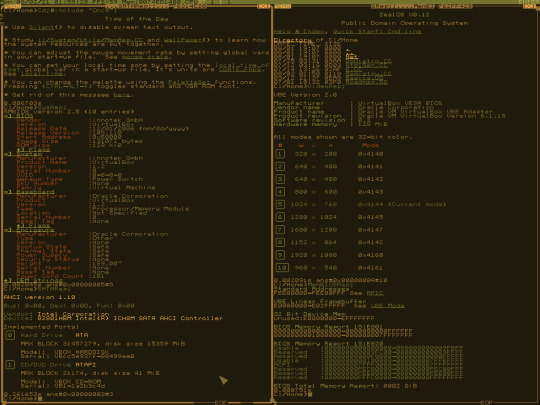
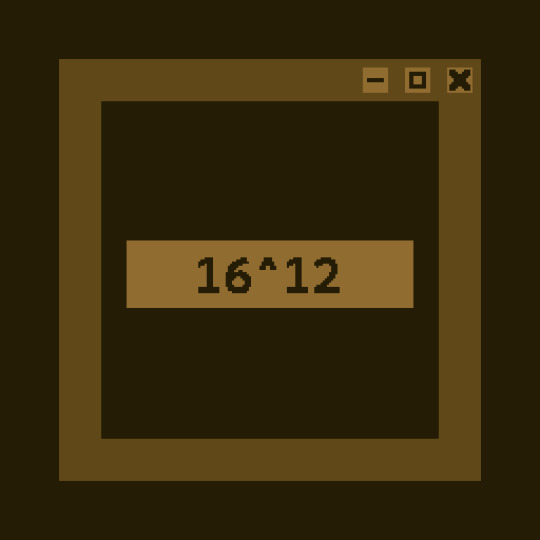
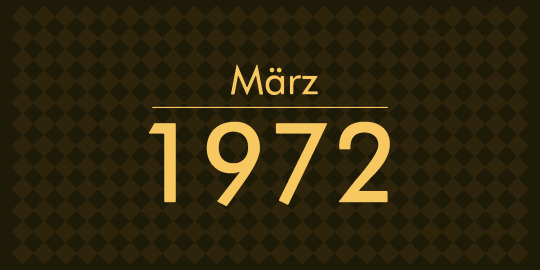
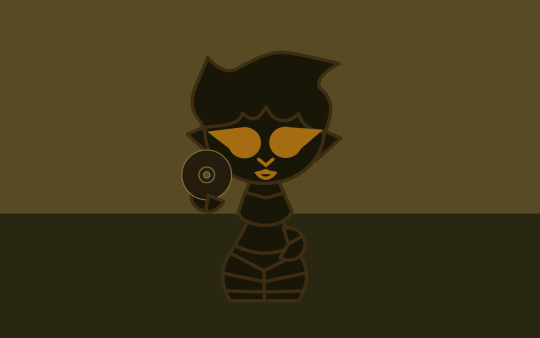
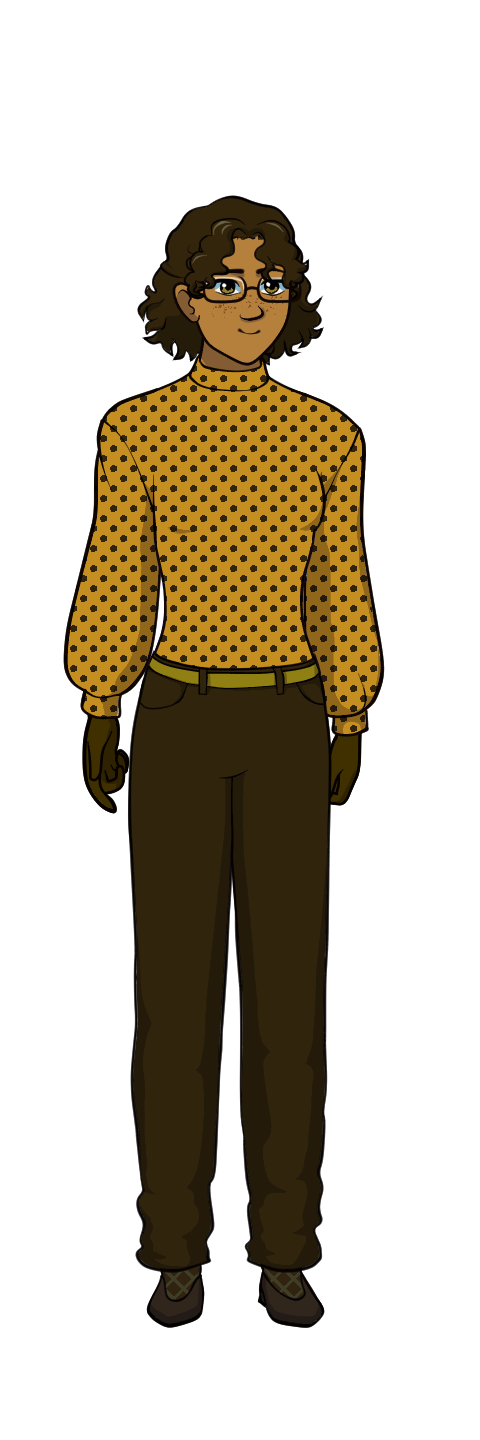


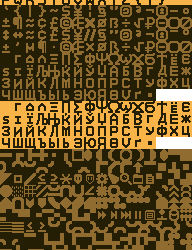
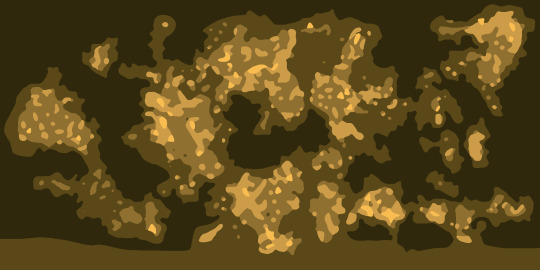

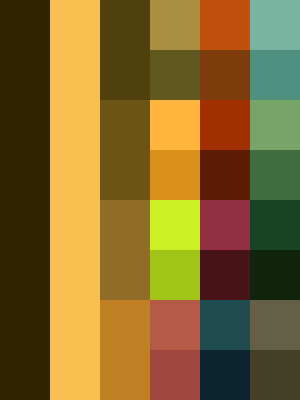
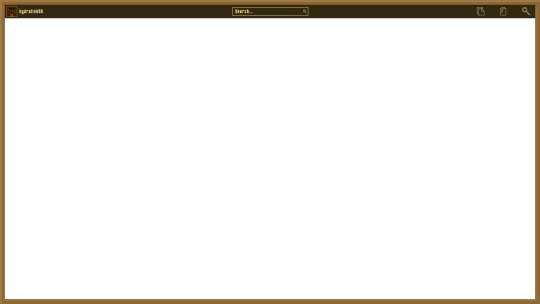
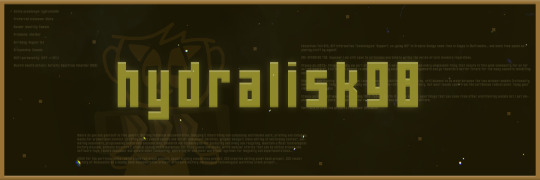
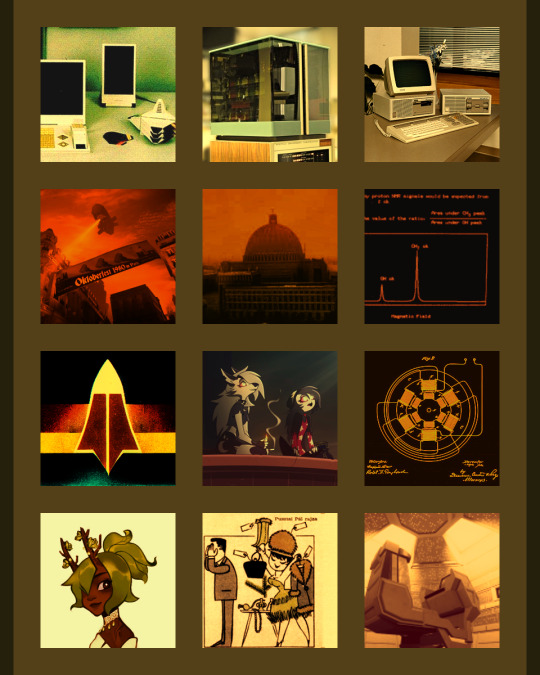
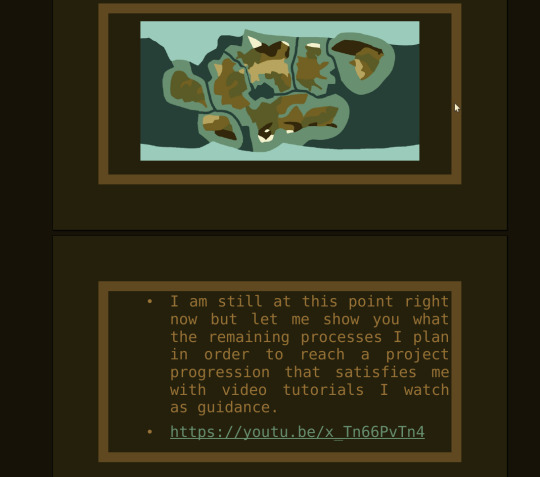
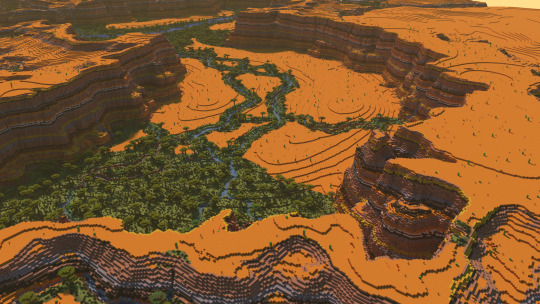

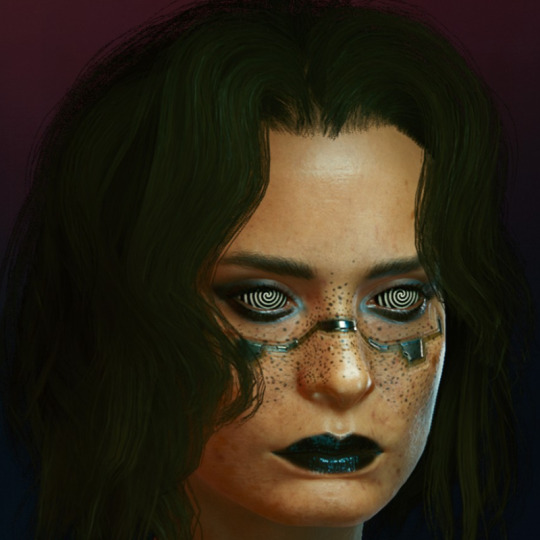

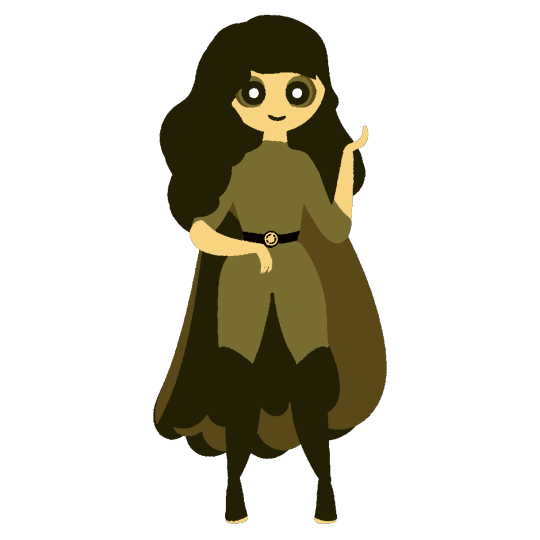
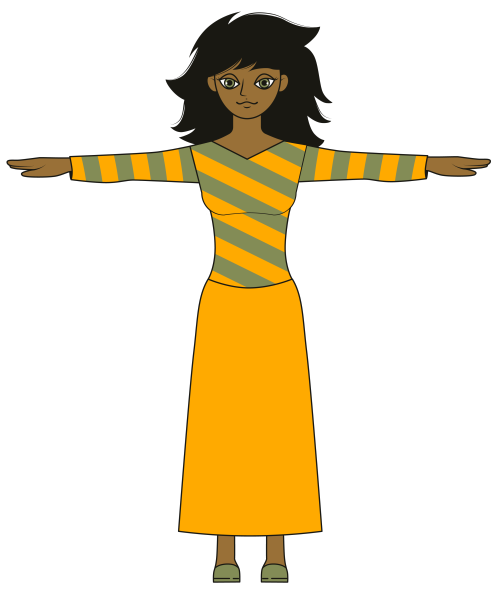
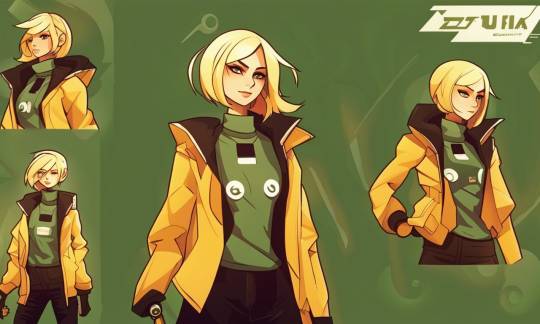
Keywords dump
Groovy soft natural retro grunge warm natural filmic comfort, tramway at dusk from mesas to the ocean far away, distant future LISP DIY copyleft cartoons, symbolic CAS LISP Gruvbox poetic devkit, soft-rounded bold geometric shape language, fontmap vector prefab modules, slice-of-life cozy rollerwave cartoons, communal retrofuturistic optimism, Bauhaus, Art Deco, Art Nouveau, "Gruvbox Light Medium + OldBook Light Academia" mashup, seventies toon cel, copyleft GLOSS data transparency movement, soviet-bloc indie shareware culture, Nintendo 64 console with 64DD expansion cartridge, SEGA Dreamcast, DEC Alpha, Sanyo 3DO TRY, Nuon, Ouya, Commodore PETSCII CBM-II, Commodore Amiga 3000+4000, bronze-age historical time period, Chronokinesis, True Polymorph, lunarpunk mysticism, Teslafunk, Solarpunk, Cyberfunk, syndicalism, georgism, ecology, harmonious innovation, progressives, seventies rollerwave futurism, filmic, OGG container format, OGV, OPUS, Vorbis, OpenEXR, Animated SVG, CSS3 animations, PK3/ZIP file archives, USD format, harsh raster XY plotters & printers, selectric typewriters, comforting Shoshone music / songs / hymns; "Soyuzmultfilm", "Helluva Boss", "The Powerpuff Girls Z", "The Powerpuff Girls", "Jet Set Radio", "Newgrounds", "Jin-Roh The Wolf Brigade", "Android Arts", "Nicky Case", "Jucika", Nintendo 64 with N64DD module, SEGA Dreamcast, Sanyo 3DO, Nuon, Ouya, DEC Alpha, Commodore 64, DECmate II, DECmate III, Intersil 6100 & 6120 lineups, PETSCII, OpenXanadu web, IBM Z/16 Linux One mainframe, OpenPOWER, Libre GLOSS data-transparent Apple Silicon M3 system, RTTY protocols, Minitel / Videotex services, hard-copy terminals, Typex, Telex Teleprinters (read-only & Read/Write), block data terminals, explorable explainers, federated ActivityPub RSS feeds, SPARC Voyager, Xerox Daybreak, R2E Micral Portal, libre bio-modding & cyberware, Pflaumen, Utalics, Lambda Star, Lambda Nova, Wyatt, Sass, MathML, XML+XSL, OpenREXX, PDP-8/e, PDP-12, PDP-15, ALGOL68, LISP 1.5, Steel Bank Common Lisp, Trial Engine, GNU Hurd, Linux, Macroware, SoundTracker, Multi-Agent Simulations, Mixtapes, Android Clades/Classes (Robots, Droids, Synthetics), Open Virtual Worlds, "Rogue Servitors"; "Liberty" caucus within "Union Party", Al-Gore (2000), Trump + Michelle Oprah (2004), Theodore Roosevelt (1912), Charles Hugues (1916), Progressives party since ~1910-1915, Pedro II of Brazil + Haile Selassie equivalent figure during the later 19th century, political split around 2024-2025, female programmers still in charge, gender inclusivity, major 3D, animation & game engine-y frameworks abundant in Common LISP (Trial Engine + AutoLISP as copyleft GLOSS / open source licensed software); Rust red dark grunge wood, translucid glass, matte plastics, fuzzy wool, forest flora, ocean water, arcade cabinets, hyper mall shops & stores, conversation pits, wax cylinder records, 45rpm autoplay mini-vinyl records, datasettes, cassettes, analog Laserdiscs, DECtape, MiniDiscs, programmable androids, retro unit record equipment, mainframes, LTO tape cartridges, amber earmuffs, black spirals-pattern balls, black matte libstick, cloven hoof shoes;
Links
Implicitly includes this blog's archives, especially what deemed relevant under the "maskoch", "maskutchew" & "16^12" hashtags;
Additional detailwork
GRUB 2 Bootloader custom theme, custom global theme with window decorations / Plasma styles / application styles combo, splash-screen / lock screens / login screens, vector-based wallpapers + icons & animated? cursors, 3x4 (soft, medium, hard; dark Gruvbox-alike, light Gruvbox-esque, warm olive green & warm rust orange-red variations), ;
DETAILS
OS: TuxedoOS (will diversify drastically soon, seriously)
DE: KDE/Plasma & KDE/Liquid
WM: KWin
Terminal: Konsole
Shell: Fish shell, with Bash as fallback
Fonts: Cascadia Code & Cascadia Mono
PlasmaStyle: Daisy (+ Old Plastics?), Breeze
Cursor: Simp1e-Gruvbox-Light
ColorScheme: WarmColorsLight
Icons: Gruvbox Plus Dark
Web Browsers: Librewolf, Firefox...
Dotfiles: Not yet anywhere near ready at this time.
More to come relatively soon...
1 note
·
View note
Text
HISTORIA DE LAS COMPUTADORAS
La computadora es un dispositivo informático que es capaz de recibir, procesar, almacenar y devolver información. Una computadora está preparada, gracias a sus circuitos y hardware, para llevar a cabo operaciones lógicas o aritméticas de forma automática cuando el usuario se lo indique, mediante comandos a través del software.

EVOLUCION DE LAS COMPUTADORAS
PRIMERA GENERACION:
Modelo Z1: fue fabricado por Konrad Zuse en 1938. Es considerada la primera máquina completamente electromecánica.
ENIAC (Electronic Numerical Integrator And Computer ): se desarrolló durante la Segunda Guerra Mundial (1944). Esta fue la primera computadora digital en la historia, con la que se podían hacer hasta 5 mil operaciones aritméticas por minuto. Tuvo un propósito sobre todo experimental y fue creada como un proyecto de investigación por ingenieros de la Universidad de Pensilvania, en EE.UU.
IBM 701: en la década de 1950, IBM sacó al mercado el modelo 701, que fue utilizado en aplicaciones científicas, militares y de negocios. Este computador podía realizar operaciones a una velocidad de 12 mil operaciones por segundo; y fue una de los primeros en utilizar un sistema operativo a partir de 1956.
SEGUNDA GENERACION:
PDP-1 (Programmed Data Processor-1): este computador fue desarrollado por la Digital Equipment Corporation (DEC) en 1960. La PDP-1 se destacó por su capacidad para ejecutar una amplia variedad de programas, incluyendo uno de los primeros videojuegos de la historia: Spacewar!. Esta utilizaba la cinta de papel perforado como medio de almacenaje primario.
UNIVAC 1107 (Universal Automatic Computer): fue parte de la serie Sperry Rand UNIVAC 1100, lanzada en octubre de 1962. Se le conoció como la computadora de película delgada debido a que usaba una película magnética para el almacenamiento de información.
TERCERA GENERACION
IBM 360: este modelo salió al mercado en 1964 y marcó el inicio de la tercera generación, ya que fue un computador comercial que usó circuitos integrados.
PDP-8: fabricada a partir de 1965, la PDP-8 se convirtió en una de las computadoras más populares de la tercera generación. Fue pionera por su medida y calificada como "minicomputadora", aunque era grande para los estándares de hoy.
CUARTA GENERACION
IBM 360: este modelo salió al mercado en 1964 y marcó el inicio de la tercera generación, ya que fue un computador comercial que usó circuitos integrados.
PDP-8: fabricada a partir de 1965, la PDP-8 se convirtió en una de las computadoras más populares de la tercera generación. Fue pionera por su medida y calificada como "minicomputadora", aunque era grande para los estándares de hoy.
QUINTA GENERACION
IBM 360: este modelo salió al mercado en 1964 y marcó el inicio de la tercera generación, ya que fue un computador comercial que usó circuitos integrados.
PDP-8: fabricada a partir de 1965, la PDP-8 se convirtió en una de las computadoras más populares de la tercera generación. Fue pionera por su medida y calificada como "minicomputadora", aunque era grande para los estándares de hoy.
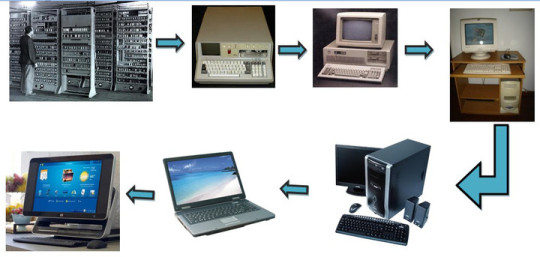
0 notes
Text
By • Olalekan Fagbade JUST IN;Chicago University gives condition to release Tinubu’s academic records Chicago State University (CSU) has given a condition to release the credentials of President Bola Tinubu. Tinubu’s main opponent in the last presidential election, Atiku Abubakar of the Peoples Democratic Party (PDP), had filed an application for his rival’s academic record. Atiku had approached a US court at the northern district of Illinois in Chicago, for an order compelling the CSU to release the academic records of Tinubu. Documents sought by Atiku, through his counsel, Angela M. Liu, include record of his admission and acceptance at the university, dates of attendance including degrees, awards and honours attained by Tinubu at the university, among others. Atiku informed the court that subpoena was to test the truth and veracity of Tinubu’s assertions, adding that he is currently the President of Nigeria and is facing various court proceedings concerning his election and the authenticity of documents relating to his attendance at Chicago State University.” Reacting, the university, in a document seen by Daily Trust said it does not “understand” why Tinubu’s academic records “could possibly have any bearing on a 2023 election challenge in a foreign country”. However, it said once an order is granted by a court in the United States (US), Tinubu’s academic record would be made public. The document reads: “Pursuant to this Court’s Order dated August 9, 2023 (Doc. 15), Respondent Chicago State University (the “University), for its response to the 28 U.S.C. 1782 Application filed herein by Atiku Abubakar (“Abubakar), states and submits as follows: “The University Defers to Intervener Tinubu Concerning Privacy and Relevance Issues. “Bola Tinubu, the President of Nigeria, graduated from the University in 1979. One of his political opponents, Abubakar, socks discovery from the University of Tinubu’s student records and information about the dates and circumstances certain diplomas were issued by the University, asserting such discovery is pertinent to a Nigerian proceeding challenging Tinubu’s election earlier this year. “The student records Abubakar seeks from the University via a documents subpoena (Doc.1-1) and the information Abubakar seeks the University to provide pursuant to a deposition subpoena (Dec. 1-2) concem Tinubu’s private educational records. But since Tinubu has intervened to oppose this discovery, the University defers to Tinubu on the privacy issues implicated by Abubakar’s Application. “Similarly, the University defers to Tinubu on whether any of the discovery information sought here is appropriate under 28 U.S.C. 41782, including whether it is relevant to the pending Nigerian proceeding. “The University struggles to understand how-given that Tinubu did in fact graduate from the University in 1979-Tinubu’s grades and other student records from the 1970s and date and signatory information on subsequently issued ceremonial diplomas could possibly have any bearing on a 2023 election challenge in a foreign country. “But the University is admittedly not familiar with the issues in the Nigerian proceeding or the evidentiary and other legal principles applicable therein. Accordingly, the University defers to Tinubu-who obviously is familiar with these issues and directly involved in that foreign proceeding-to advance procedural and relevancy objections to the Application. “In a recent conference with Abubakar’s counsel about the Application, Abubakar’s counsel confirmed that the evidentiary phase of the Nigerian proceeding has concluded, but that the information sought in the Application might be introduced in appellate proceedings to come. “The University respectfully requests that this Court, in ruling on the Application, scrutinize both the actual status of the Nigerian proceeding and the likelihood that any discovery information provided by the University would in fact be considered in the Nigeri
an proceeding. “The University Reserves Objections to the Scope of the Discovery Sought by Abubakar. Finally, in the event the Court determines to allow any discovery to proceed here, the University urges the Court to direct only limited, targeted discovery on the University. “As leave to issue any discovery has not yet been granted, and the Court’s views on what if any discovery is appropriate here under 28 U.S.C. $1782 are not yet known, it is premature for the University to raise objections to the scope of the documents and information sought in Abubakar’s subpoenas. “But without limiting further objections, which the University expressly reserves, the University notes that the scope and relevancy of certain of Abubakar’s requests are clearly inappropriate. For example, Abubakar’s document subpoena Request No. 5 seeks information on diplomas issued by the University for a 44-year period (1979 to the present), and Abubakar’s deposition subpoena Topic No. 7 seeks information on the employment status and reasons for departure of a former employee in the University’s General Counsel’s Office. “Following this Court’s ruling on the Application, should any discovery be permitted, the University will meet and confer promptly and in good faith with Abubakar’s counsel to attempt to address all the University’s concerns.” Tinubu had earlier filed a motion to quash subpoena before the Circuit Court of Cook County, Illinois, Chicago, USA.
0 notes
Text

The original SPACEWAR from 1962, running on a vector graphics display driven by a DEC PDP-1.
Strangely modern-looking for a 60 year old game, isn't it?
623 notes
·
View notes
Text

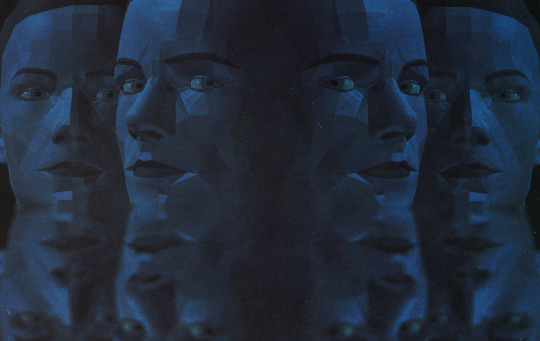
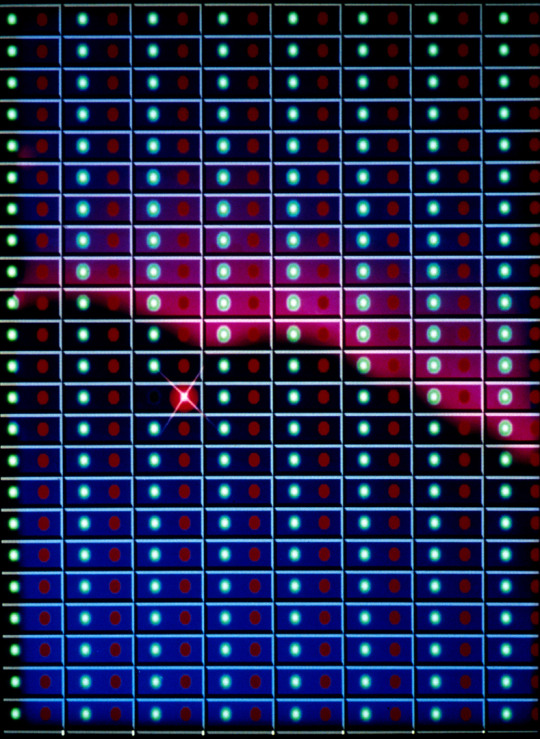
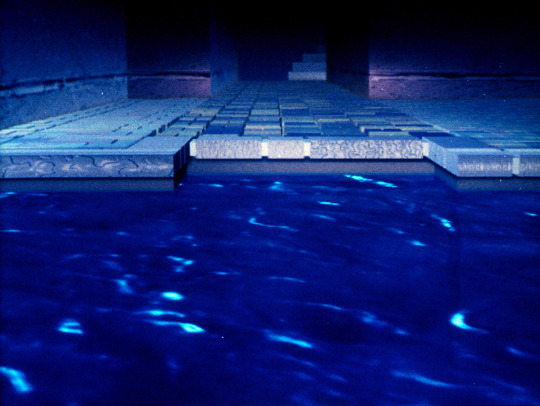


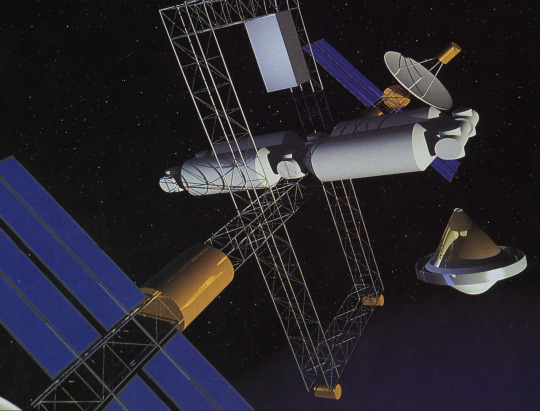



SIGGRAPH Computer Art Show July 27th - 31st, 1987
selected excerpts
Peter Voci: Displayscape
Hdw: DEC Micro-PDP 11 Sftw: CGL
Steve Dipaola: Blue Cirque
Hdw: VAX 11/785/Ikonas/Dicomed Sftw: N.Y.I.T.
Mr. Screens: Control
Hdw: Minivax PDP11/Genisco F B/Matrix QCR Sftw: Images I
Delle Maxwell: Sketches of Venice
Hdw: Ridge 32/Raster Tech F B Sftw: In-house Affiliation/Location: Pacific Data Images
Craig Caldwell: What in the World
Hdw: Marc2/VAX 780 Sftw: TWIXT Affiliation/Location: Ohio State University
Alyn P. Rockwood: Toroidal Knot
Hdw: VAX 11/780/E&S PS340 Sftw: By artist
Randy Bradley: The Light Stuff
Hdw: DG MV/10000/E&S PS300/Raster Tech 1/380/DUNN 635 Sftw: Clockworks Affiliation/Location: Rensselear Polytechnic Institute
Lucia Grossberger, B. Bishop: SpaceLace ’87
Hdw: Apple II GS Sftw: PACK developed By B. Bishop
Karin Schminke: Grid Frieze
Hdw: Mindset/Diablo C150 Prtr Sftw: Lumena Affiliation/Location: Eau Claire and University of Wisconsin
Patricia Search: Visions
Hdw: Data General MV10000/E&S PS300 Sftw: Getto-Long Ray Tracer Rensselear Polytechnic Institute
What’s the point? What is the art in a computer art exhibit? Why have this exhibit at SIGGRAPH at all? Why is it that computer art is still being “discovered”? It seems to go without saying that all these and other questions are asked each year. Nevertheless, as the SIGGRAPH ’86 Art Show so graphically illustrated in its retrospective, this “new art” has been around for at least the last twenty years. Yet, for each new Columbus, working with the computer seems to present a challenge in and of itself. A challenge independent of the product that is produced. Approaching the “medium” from every conceivable direction, the visual architect sculpts meaning and imagery from a general purpose tool with roots extending through both every computing and every visualizing device ever produced.
SIGGRAPH chair Joanne P. Culver, from the overview
#siggraph#digital art#1980s#1987#design#computer art#3D#technology#art#80s design#engineering#computer science
6 notes
·
View notes
Video
youtube
Behold, the legendary Digital Equipment Corporation PDP-1
27 notes
·
View notes
Text
Soviet computing graveyard

In the 1970s, the Soviet Union started to clone DEC's PDP workhorse minicomputers, especially the PDP-8, which was replicated in the USSR as the Saratov-2. Today, the Saratov-2 is a distant memory, with not even a single high-quality photo of the system online.
Until now. Russian urban explorer Ralph Mirebs's photos of a "Soviet Computing Cemetery" (location undisclosed) that features the rotting remains of a Saratov-2 amid the ashes and fire-suppresant residue of a long-ago data-center blaze.
https://rusue.com/cemetery-of-soviet-computers/
The Saratov-2 was wild: it didn't have a microprocessor; rather, it was broken down into components, each in its own drawer: a 12-bit computing unit, I/O, RAM (ferromagnetic cubes).
Also present in the cemetery: an Electronics 100/25 - the Soviet version of the PDP-11 - and some DVK-2Ms (early personal computers).
The author recalls their own computer science education in 1993, when "one teaching DVK could distribute programs for a couple of dozen Spectrums through the network."
One of my last trips before the crisis hit was my visit to the Computer History Museum's boneyard - a massive warehouse filled with priceless paleocomputing remnants. Though the location is a secret, they let me take and post my photos:
https://www.flickr.com/search/?sort=date-taken-desc&safe_search=1&tags=computerhistorymuseum&user_id=37996580417%40N01&view_all=1
It was the end of an incredibly educational day I spent with Museum personnel, doing research for my case studies on the role that adversarial interoperability played in competition in the tech industry:
https://www.eff.org/deeplinks/2019/10/adversarial-interoperability
That day reminded me powerfully of my visit to St Petersburg's Popov Museum in 2006, back when my (now dead) great-uncle Boris Rachman was curator:
https://www.flickr.com/search/?user_id=37996580417%40N01&sort=date-taken-desc&safe_search=1&view_all=1&tags=popov
Soviet computing history is heroic in a way that's hard to put into words: the constraints of the era - political, economic, material - required so much ingenuity. Mirebs' photos for Russian Urban Exploration were the best thing I've seen all weekend.
Image: Ralph Mirebs/Russian Urban Exploration https://rusue.com/cemetery-of-soviet-computers/
21 notes
·
View notes
Text
Computer Fundamentals
Nowadays, computers are making jobs easier for people.
Therefore, it is very necessary to have knowledge of Computer basics. In this article, we have covered all the basics of the computer such as what is a computer, definition of computer, basic functions of a computer, generations of computer, classification or types of computer, advantages and disadvantages of a computer, etc.
What is Computer
In 1640, the term ‘Computer’ was initially referred to as ‘ one who calculates ‘. Later in 1897, it was called the ‘ Calculating Machine ‘. In 1945, it was indicated as ‘ programmable digital electronic computer ‘ which is now called a ‘computer’.
What is Computer definition?
“ A computer is a programmable electronic machine designed to take input, perform prescribed arithmetic and logical operations at fast speeds, and provide the output of these operations. “
Basic Functions of Computer
There are four basic functions of the computer: Input, Processing, Output, and Storage.
Generations of Computer
There are five generations of the computer, which are listed below with approximate period:
First Generation (1946–1959)
- Electronic Valves (Vacuum Tubes). — ENIAC, EDVAC, UNIVAC, etc.
Second Generation (1959–1965)
- Transistors. — IBM 1620, IBM 1400 and 7000 series, CDC 3600, etc.
Third Generation (1965–1971)
- Integrated Circuits (ICs). — IBM 360, IBM 370, PDP, etc.
Fourth Generation (1971–1980)
- Very Large Scale Integrated (VLSI) Circuits. — DEC 10, STAR 1000, CRAY-1 and CRAY-X-MP, etc.
Fifth Generation (1980 — Present)
- Ultra Large Scale Integration (ULSI), Artificial Intelligence (AI) and Parallel Processing Hardware. — Desktop, Laptop, NoteBook, ChromeBook, and UltraBook, etc.
Uses of Computer
Here, we have explained the most important uses of the computer system:
* can store important data. * can communicate with people around the world. * used for the educational system. * used for office works like data entry, support, development, etc. * used in banking, finance, and marketing. * used in government sectors. * used in sports. * used for Press and publishing. * used for entertainment.
Classification of Computer
According to usage and functionalities, computers can be classified as:
Analog Computer
Digital Computer
Hybrid Computer
Types of Computer
Supercomputer
Mainframe Computer
Microcomputer
Mini Computer
Advantages and Disadvantages of Computer
Read more at TutorialsMate.
Read Complete Tutorial at https://www.tutorialsmate.com.
4 notes
·
View notes
Text
The original "Spacewar!" running on a virtual DEC PDP-1
https://www.masswerk.at/spacewar/ Comments
1 note
·
View note